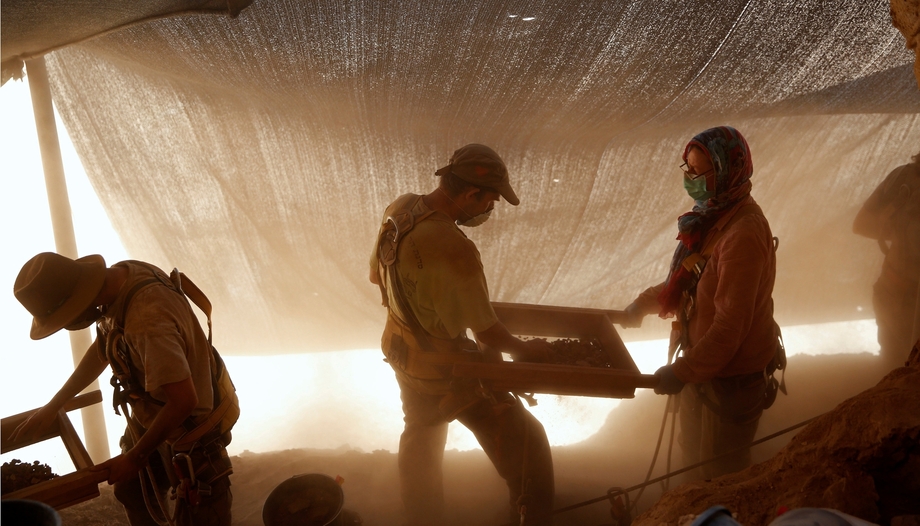Since the end of the 19th century and throughout the 20th century, especially thanks to the tireless work of Christian archaeologists (Franciscans in the first place) and Israeli Jews, there have been countless archaeological discoveries in the Holy Land. Archaeology, in fact, has favored the development of the "Third Quest" and historical research into the figure of Jesus and his social, religious and cultural context, especially after the discovery of the Qumran Scrolls (1947). In fact, today it is often said that archaeology is a "fifth Gospel".
In this article, we report on some of the most important findings that answer as many objections from stubborn critics.
Jesus did not exist because Nazareth never existed!
Until the 1960s, there were those who denied the existence of Jesus because Nazareth is not mentioned in the Hebrew Scriptures and no trace of him had ever been found. However, Professor Avi Jonah of the Hebrew University of Jerusalem discovered in 1962, in the ruins of Caesarea Maritima (capital of the Roman province of Judea), a marble slab with an inscription in Hebrew dating from the third century BC, which mentions the name of Nazareth.
In the same years, excavations in the area of the Basilica of the Nativity unearthed the ancient village of Nazareth and what is universally believed to be Mary's maiden house (the site of the Gospel account of the Annunciation). Finally, recent excavations by Israeli teams have uncovered, also in Nazareth, not only a house from the time of Jesus near the "house of Mary," but also what may be the family home of Jesus, Joseph and Mary.
Villages around the Sea of Galilee? Not a shadow
The first to carry out major excavations around the Sea of Galilee were, starting in the 1960s, archaeologists such as the Franciscan Virgilio Sorbo, who unearthed the village of Capernaum, discovered the house of Peter and the famous Byzantine synagogue, which can be admired today and under which there is a Roman synagogue.
However, in 1996, a team led by Israeli Jewish archaeologist Rami Arav found the remains of the gospel village of Bethsaida Iulia (the fishing village from which several of Jesus' disciples came).
What about synagogues? They did not exist
The most recent discoveries have shown that in Jesus' time even the smallest village in Palestine had a synagogue. In addition to Capernaum, numerous synagogue structures have been discovered in and around the Palestinian region since the 1960s.
How not to mention the two recently found in Magdala (near Capernaum), also dating from the first century? A fishing boat of the same period, intact and very similar to those described in the Gospels, was also discovered in Magdala.
Pontius Pilate? An invention!
In 1961, Italian archaeologists led by Antonio Frova discovered, also in Caesarea, a limestone slab with an inscription referring to "Pontius Pilate Praefectus Judaea". The stone block, known since then as the "Inscription of Pilate", must have been found on the outside of a building that Pontius Pilate, prefect of Judea, had built for the emperor Tiberius.
Until the date of its discovery, although both Josephus Flavius and Philo of Alexandria had made mention of Pontius Pilate, his existence was questioned.
The Gospel of John? "Spiritual" things!
And not only that. This is confirmed, among others, by two exceptional archaeological discoveries: the pool of Bethesda (today the sanctuary of St. Anne) and the "Lithostrotos", both near the esplanade of the Temple of Jerusalem. Vestiges of them had been lost, but they came to light exactly where they were located by the Gospel of John and perfectly matched his description.
The Pool has five porticoes, as narrated in the episode of the paralytic (Jn 5:1-18) located in the "probationary pool", surrounding a large pool about 100 meters long and 62 to 80 meters wide, surrounded by arches on all four sides.
The "Lithostrotos", on the other hand, is a paved courtyard of about 2,500 m2, paved according to Roman usage ("lithostroton"), with a higher place, "gabbathà" (Jn 19:13), which could correspond to a turret. Its location, near the Antonia Fortress (northwest corner of the Temple esplanade), and the type of remains brought to light allow us to identify the place where the praefectus sat to pass sentence.
There is no evidence of what the Temple was like at the time of Jesus.
In the area of the Temple, razed by Titus in 70 A.D., archaeologists have uncovered the accesses to the esplanade with the double and triple gate to the south, bringing to light the monumental remains to the west, which include a paved street, flanked by stores, and the foundations of two arches, one called Robinson's, which supported a stairway ascending from the street below, and another of greater span, Wilson's, which directly connected the temple mount with the upper city.
The layout of the portico known as "Solomon's" is also known, as well as other staggered streets that ascended from the east, from the area of the Pool of Siloam. All of this is consistent with the Gospel descriptions.
We do not know how crucifixion was practiced.
Most important is the discovery in 1968 in a cave at Giv'at ha-Mivtar, north of Jerusalem, of 335 skeletons of Jews from the first century AD. According to medical and anthropological analyses carried out on the bones, these were men who had died violent and traumatic deaths (presumably crucified during the siege of 70 A.D.). Then, in a stone ossuary in the same cave, bearing the name of a certain Yohanan ben Hagkol, were the remains of a young man of about 30 years of age, with his right heel still nailed to his left by an 18 cm long nail.
The legs were fractured, one broken cleanly and the other with shattered bones: this was the first documented evidence of the use of "crurifragium" (breaking the legs of the crucified). These bone finds illustrate the 1st century Roman crucifixion technique which, in this case, consisted of tying or nailing the hands to the horizontal beam ("patibulum") and nailing the feet with a single iron nail and a wooden dowel to the vertical post (a piece of acacia wood was found between the head of the nail and the bones of this Yohanan's feet, while attached to the tip was a splinter of olive wood from which the cross was made).
The crucified were not buried by the Romans, so neither was Jesus!
It is true that in other regions of the Roman Empire those condemned to crucifixion were left to rot on crosses or eaten by birds, and then the remains were thrown away or buried in mass graves, but not so in Israel. Here, the condemned were always removed from the crosses by a religious precept: "If a man has committed a crime worthy of death, and you have condemned him to death and hung him on a tree, his body shall not remain all night on the tree, but you shall bury it the same day, for the gallows is a curse from God, and you shall not profane the land which the Lord your God gives you as an inheritance" (Deut. 21:22-23), as supported by the Gospels and the Jewish scholar David Flusser, and later confirmed by the discovery of Giv'at ha-Mivtar.
There is also consensus among archaeologists on the location of Jesus' crucifixion on the rock of Golgotha, now within the Holy Sepulcher, a site characterized by numerous excavations that have brought to light tombs excavated there and dating back to before 70 AD.
As can be seen, the Holy Land and archaeology constitute today a "fifth Gospel".








